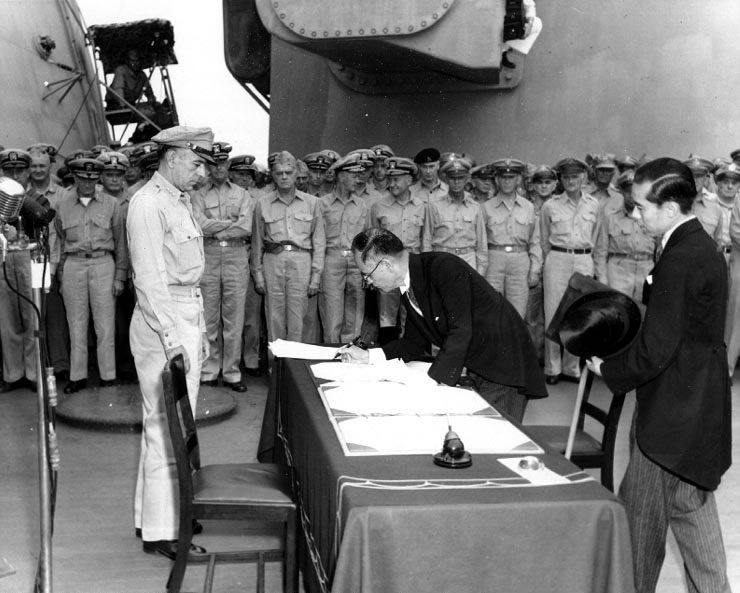Japanese Sign Final Surrender
A Tribute To America
Did You Know? - The surrender of Japan brought hostilities in World War II to a close. By the end of July 1945, the Imperial Japanese Navy was incapable of conducting operations and an Allied invasion of Japan was imminent. While publicly stating their intent to fight on to the bitter end, Japan's leaders at the Supreme Council for the Direction of the War (the "Big Six") were privately making entreaties to the neutral Soviet Union, to mediate peace on terms favorable to the Japanese. The Soviets, meanwhile, were preparing to attack the Japanese, in fulfillment of their promises to the Americans and the British made at the Tehran and Yalta Conferences.
On August 6, the Americans dropped an atomic bomb on Hiroshima. Late in the evening of August 8, in accordance with Yalta agreements but in violation of the Soviet–Japanese Neutrality Pact, the Soviet Union declared war on Japan, and soon after midnight on August 9, it invaded the Japanese puppet state of Manchukuo. Later that day the Americans dropped an atomic bomb on Nagasaki. The combined shock of these events caused Emperor Hirohito to intervene and order the Big Six to accept the terms for ending the war that the Allies had set down in the Potsdam Declaration. After several more days of behind-the-scenes negotiations and a failed coup d'état, Hirohito gave a recorded radio address to the nation on August 15. In the radio address, called the Gyokuon-hōsō ("Jewel Voice Broadcast"), he announced the surrender of Japan.
On August 28, the occupation of Japan by the Supreme Commander of the Allied Powers began. The surrender ceremony was held on September 2 aboard the U.S. battleship Missouri, at which officials from the Japanese government signed the Japanese Instrument of Surrender, ending World War II. Allied civilians and servicemen alike celebrated V-J Day, the end of the war; however, some isolated soldiers and personnel from Japan's far-flung forces throughout Asia and the Pacific islands refused to surrender for months and years after, some into the 1970s. Since Japan's surrender, historians have debated the ethics of using the atomic bombs.
Hostilities formally ended when the Treaty of San Francisco came into force on April 28, 1952.
